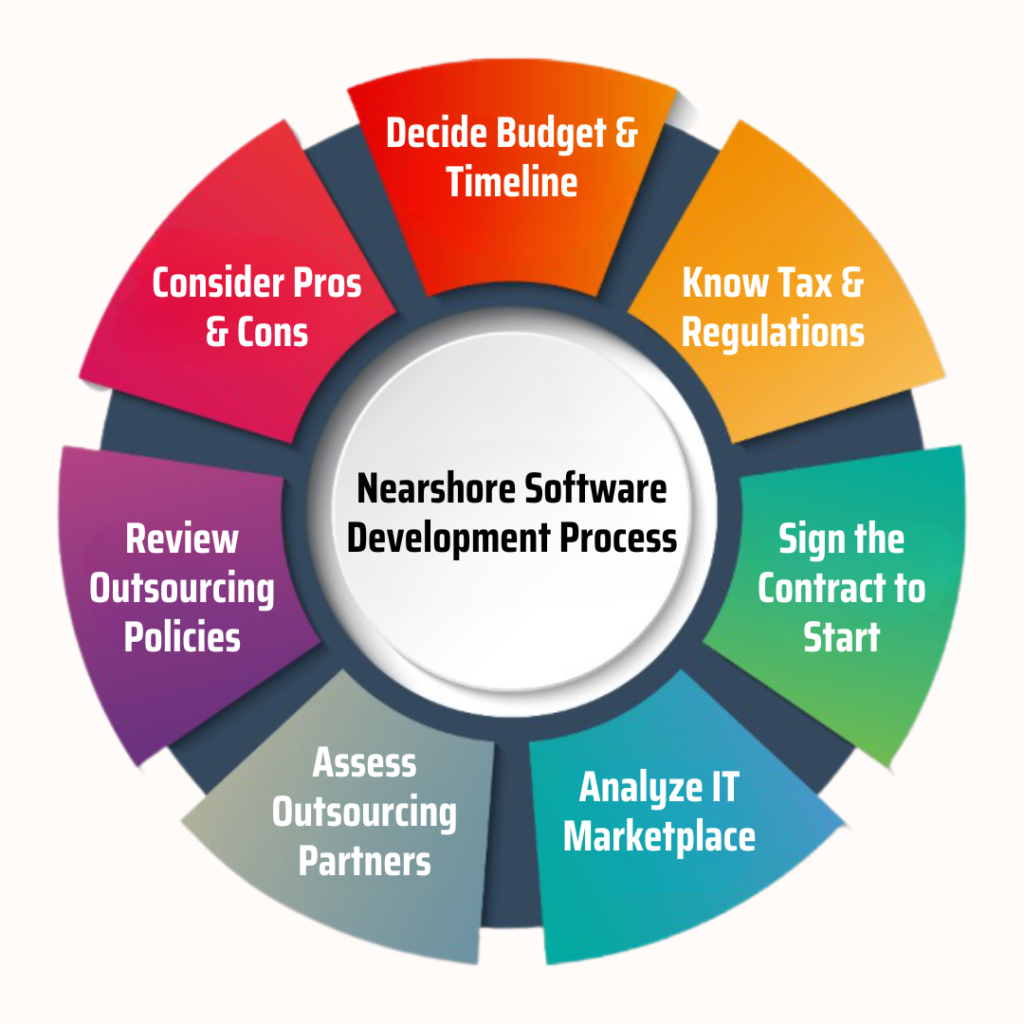Kicking off with nearshore software development team, this opening paragraph is designed to captivate and engage the readers, setting the tone formal and friendly language style that unfolds with each word.
Nearshore software development teams offer a strategic advantage over offshore teams, providing a blend of cost-effectiveness and efficiency that is crucial in today’s competitive market. With successful project examples and insights on their contributions, these teams are reshaping the software development landscape.
Importance of Nearshore Software Development Teams

Nearshore software development teams play a crucial role in the success of many projects by offering various advantages over offshore teams. These teams provide a cost-effective and efficient solution for businesses looking to outsource their software development needs.
Advantages of Nearshore Software Development Teams
- Proximity: Nearshore teams are located in neighboring countries or regions, making communication easier due to overlapping time zones and cultural similarities.
- Cost-effectiveness: Nearshore teams often offer competitive rates compared to onshore teams while maintaining high-quality standards.
- Talent pool: Nearshore teams have access to a diverse talent pool of skilled professionals who can bring fresh perspectives and innovative solutions to projects.
- Efficiency: With reduced travel time and improved communication, nearshore teams can collaborate effectively with clients, leading to quicker project delivery.
Examples of Successful Projects Managed by Nearshore Teams
One notable example is a financial services company that partnered with a nearshore software development team to create a mobile banking application. The project was completed within budget and ahead of schedule, thanks to the efficient collaboration between the client and the nearshore team.
Contribution to Cost-effectiveness and Efficiency
- Nearshore teams help reduce operational costs by offering competitive rates without compromising on quality.
- Efficient communication and project management practices ensure that deadlines are met and deliverables are of high quality.
- By leveraging the expertise of nearshore teams, businesses can innovate and stay competitive in the rapidly evolving tech landscape.
Setting Up a Nearshore Software Development Team
Setting up a nearshore software development team involves several key steps to ensure success. From selecting the right location to cultural alignment, each decision plays a crucial role in the team’s effectiveness.
Selecting the Right Location
When establishing a nearshore software development team, it is essential to carefully consider the location. Factors to evaluate include time zone compatibility, language proficiency, infrastructure, political stability, and cost-effectiveness. It’s crucial to choose a location that offers a balance between proximity to your headquarters and access to a talented pool of developers.
Importance of Cultural Alignment, Nearshore software development team
Cultural alignment is a critical aspect of building a successful nearshore software development team. Ensuring that the team shares similar values, work ethic, communication styles, and business practices can significantly impact collaboration and productivity. When team members have a shared understanding of expectations and goals, they can work together seamlessly towards achieving project milestones.
Collaboration and Communication in Nearshore Teams

Effective collaboration and communication are crucial for the success of nearshore software development teams. With team members located in different countries, it is essential to implement strategies to ensure seamless interaction and coordination.
Strategies for Effective Communication
- Establish a clear communication plan outlining preferred channels, response times, and meeting schedules.
- Encourage regular video calls to build rapport and strengthen relationships among team members.
- Utilize collaborative tools such as Slack, Microsoft Teams, or Zoom for real-time communication and file sharing.
- Implement an agile project management approach to facilitate communication through daily stand-up meetings and sprint reviews.
Tools and Technologies for Collaboration
- Version control systems like Git enable team members to work on the same codebase simultaneously and track changes effectively.
- Project management tools such as Jira, Trello, or Asana help in assigning tasks, setting deadlines, and monitoring progress.
- Virtual whiteboards like Miro or MURAL allow team members to brainstorm ideas, create mockups, and collaborate on visual projects.
- Screen sharing tools like TeamViewer or AnyDesk facilitate remote pair programming and troubleshooting.
Overcoming Language and Time Zone Barriers
- Provide language training sessions or resources to improve communication skills and reduce language barriers within the team.
- Establish overlapping work hours to accommodate different time zones and ensure real-time collaboration during crucial project phases.
- Use language translation tools like Google Translate or Microsoft Translator for quick understanding of written communications.
- Document important discussions and decisions to avoid misinterpretations due to language differences.
Managing Remote Teams in Nearshore Software Development: Nearshore Software Development Team

Managing remote nearshore teams comes with its own set of challenges that need to be addressed effectively in order to ensure successful project outcomes. From communication barriers to time zone differences, there are several factors that can impact the efficiency and productivity of remote teams. Here, we will discuss some of the best practices for project management in a nearshore software development setup and share examples of successful leadership strategies for remote nearshore teams.
Challenges Faced and Solutions
- Challenge: Communication barriers due to distance and cultural differences.
- Solution: Encourage open communication channels through regular video calls, messaging platforms, and project management tools. Establish clear communication guidelines and encourage team members to ask questions and seek clarification.
- Challenge: Time zone differences leading to scheduling conflicts and delays.
- Solution: Implement flexible working hours or overlapping work schedules to accommodate team members in different time zones. Utilize time tracking tools to monitor progress and ensure timely delivery of tasks.
- Challenge: Lack of visibility and accountability in remote teams.
- Solution: Set clear goals and expectations for each team member. Implement regular progress updates, performance evaluations, and feedback sessions to keep track of individual and team achievements.
Best Practices for Project Management
- Establish a clear project scope, timeline, and deliverables at the onset of the project.
- Utilize project management tools such as Trello, Jira, or Asana to track tasks, assignments, and deadlines.
- Conduct regular team meetings, stand-ups, and check-ins to keep everyone aligned and informed.
- Promote a culture of collaboration, transparency, and mutual support within the team.
Successful Leadership Strategies
- Lead by example and demonstrate effective communication and problem-solving skills.
- Empower team members to take ownership of their tasks and encourage autonomy.
- Provide regular feedback, recognition, and opportunities for professional growth.
- Foster a positive team culture and promote work-life balance to boost morale and motivation.
Summary
In conclusion, nearshore software development teams emerge as key players in the industry, offering a blend of expertise, cost-efficiency, and seamless communication. As businesses navigate the complexities of remote work, the strategic advantages of nearshore teams continue to shine, driving success and innovation in software development projects.
FAQ Overview
How do nearshore software development teams differ from offshore teams?
Nearshore teams are geographically closer to the client, making communication easier and enabling better collaboration compared to offshore teams located in distant countries.
What are the key steps to consider when establishing a nearshore software development team?
Key steps include defining project requirements, selecting the right talent, establishing communication channels, and ensuring cultural alignment for seamless integration.
How can language and time zone barriers be overcome in nearshore team communication?
Using common language tools for communication, setting regular meeting times that accommodate different time zones, and fostering a culture of understanding and flexibility can help overcome these barriers.
